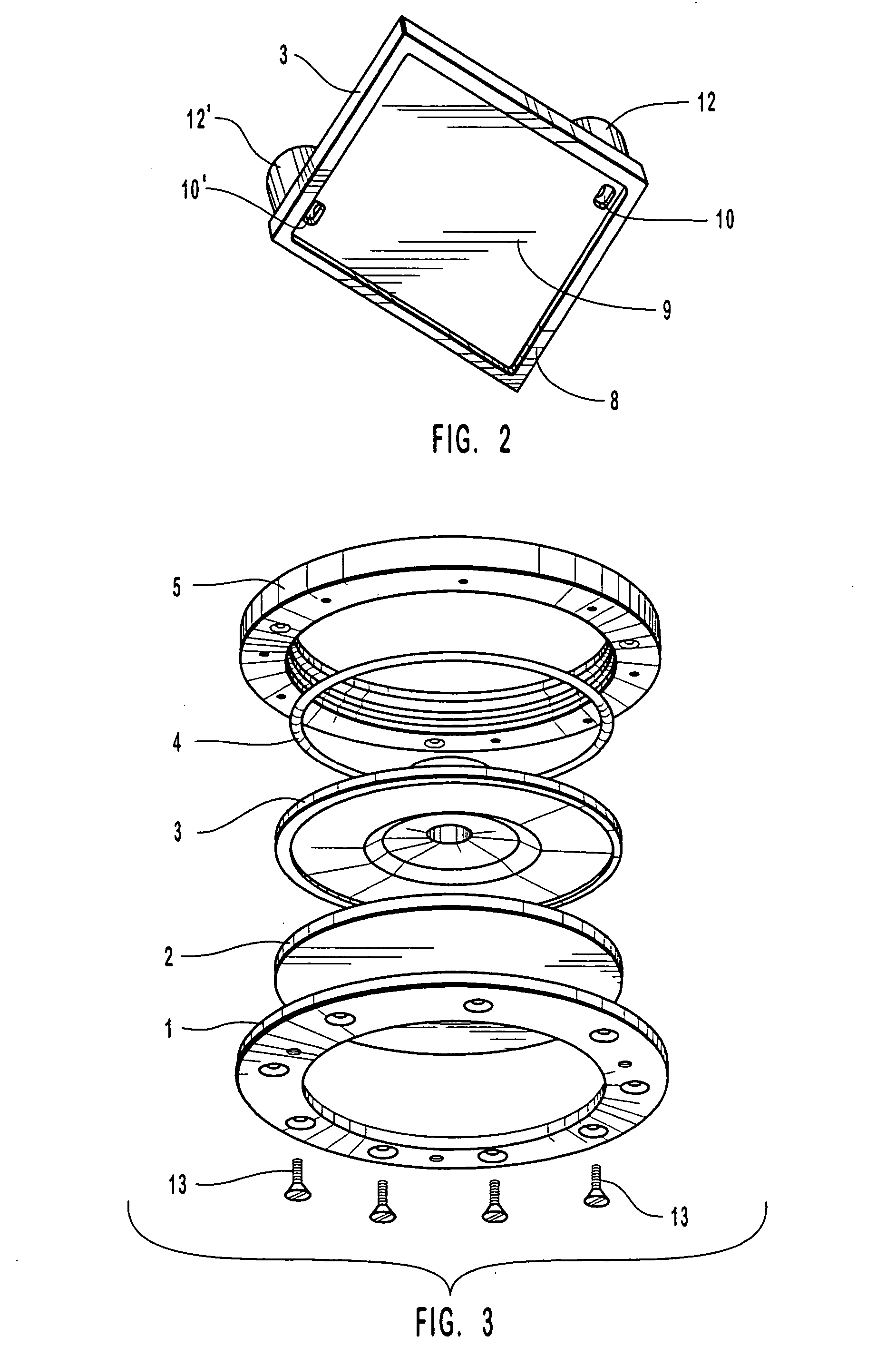Apparatus and method for conducting chemical or biochemical reactions on a solid surface within an enclosed chamber
a technology of apparatus and chamber, which is applied in the fields of biochemistry, biochemistry and biochemistry, can solve the problems of adversely affecting the reaction, insufficient control of reaction temperature, duration, mixing, etc., and achieve the effect of facilitating the mixing of components within the chamber and substantially reducing the occurrence of unwanted reactions
- Summary
- Abstract
- Description
- Claims
- Application Information
AI Technical Summary
Benefits of technology
Problems solved by technology
Method used
Image
Examples
example 2
Simultaneous Hybridization and Mixing:
[0114] The filled hybridization assembly prepared in Example 1 was placed on a rotisserie rack in a hybridization oven (Robbins Scientific® model 400; standard temperature 37° C.) and clamped in place on the rotisserie, on its side and facing the rotating direction of the rotisserie lengthwise. The assembly was placed so that the bubbles in the reaction chambers moved around the edge of the hybridization areas in the reaction chambers and that the load on the rotisserie was balanced. Hybridization continued for 16 hours, with continuous mixing the whole time from the moving bubbles caused by the rotation of the rotisserie.
[0115] Mixing of the reactants was suitable with Solutions A, B and E; however, the surfactant compositions of Solutions C and D was insufficient to allow proper mixing.
example 3
Preparation for Reuse of the Assembly:
[0116] Following the 16 hour incubation of Example 2, the hybridization assembly was removed from the incubator. The following steps were then taken for each reaction chamber: A 25 GA ⅝ inch needle was placed through one septum of a cover. A 25 GA ⅝ inch needle was attached to a 1 cc syringe and used to withdraw the solution through the other septum. The syringe was detached from the needle, leaving the needle in the septum, and the solution was discarded. A second 1 cc syringe was used to draw up about 200 μl of 6×SSPE (containing 900 mM NaCl, 60 mM sodium phosphate, 6 mM EDTA) / 0.1% Triton X-100 wash solution, which was then injected into the empty chamber. The second 1 cc syringe was removed from the needle and replaced with the first 1 cc syringe. The wash solution was removed from the reaction chamber and the wash was discarded. Then, the wash steps with 6×SSPE / 0.1% Triton X-100 wash solution were repeated.
[0117] When the above steps were...
example 4
Reading the Oligonucleotide Array:
[0118] Following the washing procedure of Example 3, the slide was removed from the slide boat and was read using a confocal scanner. The background interference was very low when Solution A was used, as shown in FIG. 9, and, similarly, background interference was also very low with all the other solutions, i.e., solutions B, C, D and E.
PUM
| Property | Measurement | Unit |
|---|---|---|
| height | aaaaa | aaaaa |
| volume | aaaaa | aaaaa |
| volume | aaaaa | aaaaa |
Abstract
Description
Claims
Application Information
 Login to View More
Login to View More - R&D
- Intellectual Property
- Life Sciences
- Materials
- Tech Scout
- Unparalleled Data Quality
- Higher Quality Content
- 60% Fewer Hallucinations
Browse by: Latest US Patents, China's latest patents, Technical Efficacy Thesaurus, Application Domain, Technology Topic, Popular Technical Reports.
© 2025 PatSnap. All rights reserved.Legal|Privacy policy|Modern Slavery Act Transparency Statement|Sitemap|About US| Contact US: help@patsnap.com



